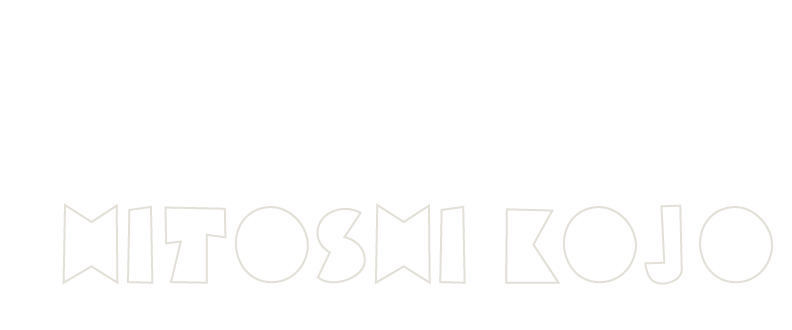 |

▲ slideshow
|
|
Omnimoment
Site-specific sound works 2006 - 2009
- Title: Omnimoment
- Artist: Hitoshi Kojo
- Track Title [duration]: 1. Shiranui [9:31], 2. Sea Migration [12:22], 3. Sunshine Erosion [10:30], 4. Star Grazing [9:56], 5. Seeding Planets [13:40]
- Format: CD + 24 pages booklet (digital offset)
- Cover: 1st/2nd edition: Cardstock(315gsm), Digital offset, Die-cut, 3rd edition: Cardstock(375gsm), Handprinted silkscreen, Die-cut
- Number: 1st edition 88 copies (numbered), 2nd edition 50 copies, 3rd edition 50 copies
- Issue: 1st edition: February 2012 | Digital file edition 2023
- Label: omnimemento
- Catalog number: om 05
|
|
◐ News
◐ About
◑ Archive
Recording
◐ Label
◐

|
|
|
In situ
Most of the objects and environments in our daily life are made for some purposes and are given the role.
Even most of the 'natural world' that we encounter in our daily life is being converted for our convenience, or is at least in a converted environment, or is abandoned aſter fulfilling its role.
If those objects and environments are used in a totally different manner or put in a totally disconnected situation from their intended role, the concreteness will be extremely apparent and a 'parallel world' will appear.
This method was investigated by many surrealists in the early twenties, and is also well established as 'musique concrète' within music history.
Even though I use the same method, I am more interested in entering 'parallel world' through action, to experience a 'molecular communication' with the objects and environments through all my senses, rather than to make the 'parallel world' appear.
If I dare say, the purpose is to summon a 'primal world' from 'nature' that is filled with the swirling energy of the elements, such as water, fire, wind, earth, and void, through 'molecular communication'.
Such nature is oſten considered to be an imaginary product in a utopia which doesn't actually exist. However, since it is based on concrete matters in daily life, it should more accurately be called 'crucial reality'.
The expression 'crucial reality' may evoke the cruelty of reality. However, when I enter into reality through 'molecular communication', I feel that the 'primal world', which is woven with elemental energies, is incredibly beautiful. Therefore I accept it rather as the 'crucial beauty of reality'.
Although the beauty always exists everywhere, it is quite difficult to feel it in daily life, since it is covered by the showy brightness of practicality. It is similar to the fact that we cannot see beautiful stars in the daytime.
The 'crucial beauty of the reality' is omnipresent in daily life. Is it useless to record the action, to summon it into the sensuous world? At least, there is no useless matter in this 'crucial reality' that is released from the spell of practicality.
February 2011, Vevey
|
|
About this album
Omnimoment is a collection of Hitoshi Kojo's site-specific soundworks that were originally presented as installations or live-installation/performances between 2006 and 2009.
All these works were created for a particular location by using objects that were found in and around that location, mixed with environmental sound.
They were presented in long durations, from two hours to ten weeks, via multi-channel speaker systems, blending with the acoustic sound and resonance of the space.
For this album, the works have all been edited and re-composed in stereo using the partial documents of the respective projects.
I hope this album may stand alone as a work in its own right, without necessary reference to the original situations.
However the basic structure and the original sounds that were created at (or for) each location have been preserved as much as possible.
|
|
|
|
Review
Gorgeously packaged, gorgeous dronemusik!
Hitoshi Kojo is a Japanese sound artist and drone-centric expressionist who has recorded in the past under the moniker Spiracle and performs in the jubilantly psychedelic but still quite droned-out project Juupala Kaapio.
Omnimoment is a collection of edits from Kojo's sound installations and site-specific work dating from 2006 - 2009, all of which extract and manipulate elemental forces of wind, fire, water, metal, wood, sand, etc. into blossoming thrums of sublime minimalism which run parallel to the works of Andrew Chalk, Loren Chasse, and John Grzinich.
"Shiranui" was originally conceived at the MoKS residency program in Estonia, sourced mostly from the blades of an abandoned Soviet turbine left inexplicably out in the countryside. Kojo extracts pensive, metallic overtones from those blades that sound more like an ancient gong than some hulking industrial machine; and he amasses those sounds into semi-melodic phrases and ritualized acoustic dronings that Organum mastered in the mid-'80s.
"Sea Migration" is an excerpt from an installation involving a feedback system and a bunch PVC pipes that hung from the top window of Germanic castle, looking sort of like a weird plastic octopus playing the part of Rapunzel. Those pipes captured the sound of the wind and the various frequencies of that feedback system creating a tactile, generative composition of pure tones and haptic events not too far from those far more composed works from Andrew Chalk's once prolific project Ora.
The last three tracks demonstrate Kojo's ongoing strategies involving found objects through a process which he calls 'molecular communication' where extended vibrations and dense beds of accreted drone broadcast outward from Kojo's scraped metals, clinked glass, and rubbed sand.
There's definitely some type of alchemy at work in Kojo's sound design, with mysterious energies transforming the commonplace into something sublime, otherworldly, or divine.
Review by Aquarius Records
|
|
|

The material on this site is licensed under a Creative Commons Attribution-NonCommercial-ShareAlike 3.0 Unported License.
|



